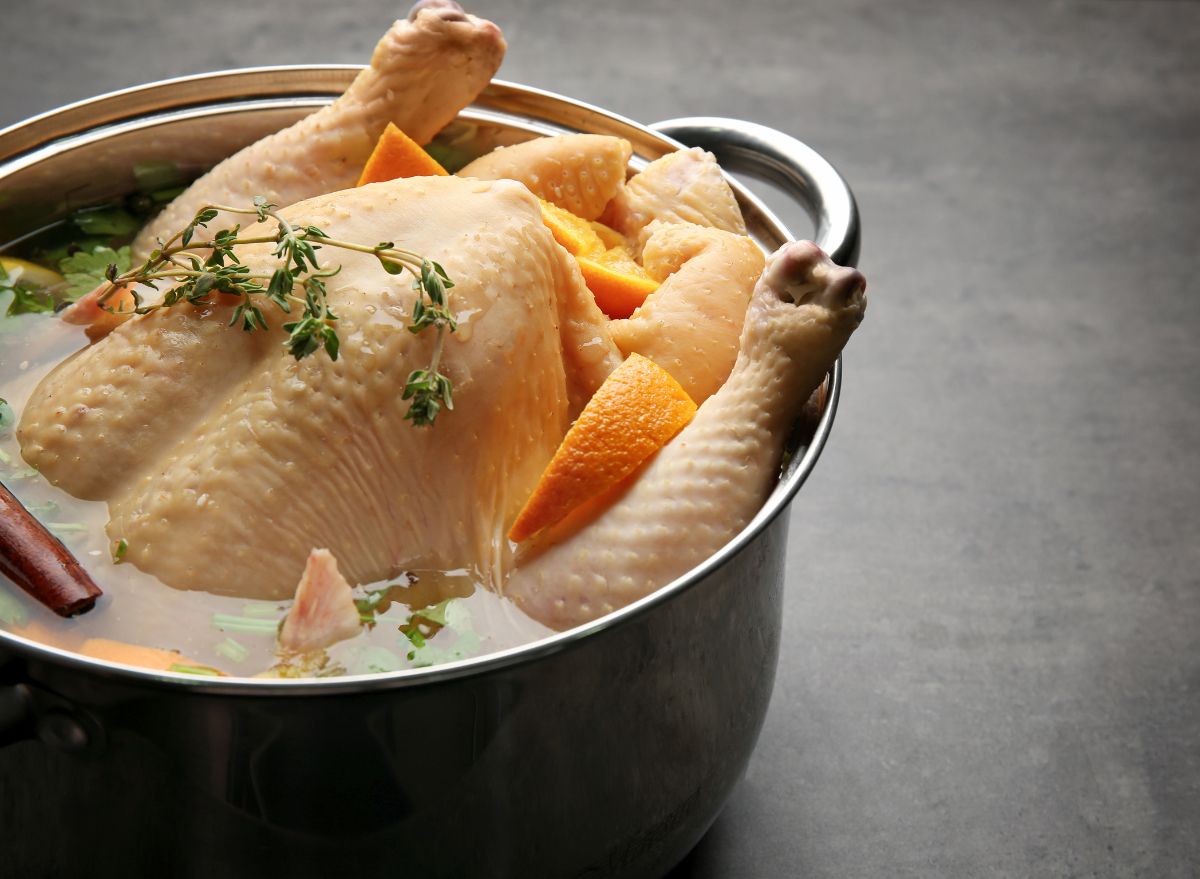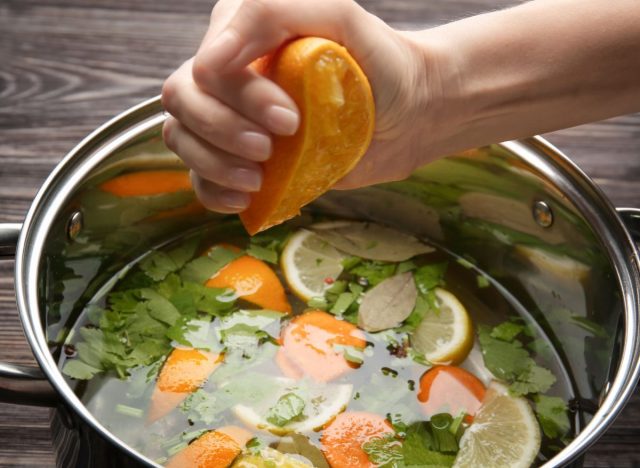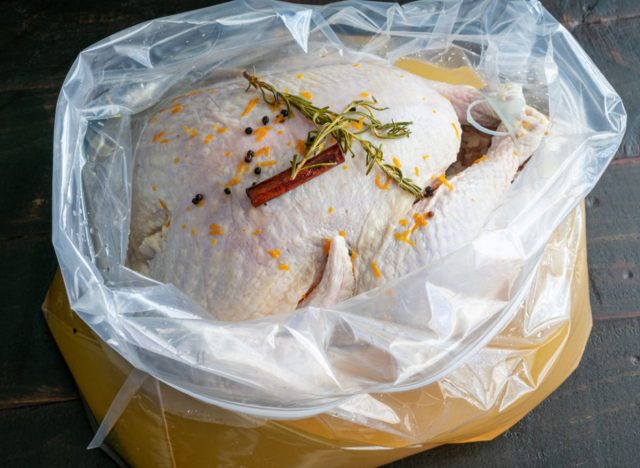Find out the ‘7 Tips And Methods to Professionally Brine a Turkey’ Is a dry turkey the worst possible thing? No, we believe. The simple tactic of brining can completely solve that issue.
Brining involves submerging the bird in a simple saltwater solution, which modifies the meat’s texture and aids in its ability to absorb more moisture. Even while this extra step isn’t necessary, it can transform any turkey from average to amazing.
Sure, brining might require a little extra labour, but chefs say the tender, juicy results are well worth the time and effort.
Therefore, pay attention to the following advice for brining a turkey like an expert whether you’re hosting Thanksgiving dinner or simply cooking a turkey for a family gathering. Read on to get the 7 Tips And Methods to Professionally Brine a Turkey.
Separate the bird into parts
According to Urban Hearth, “Turkey breast and turkey leg quarters might as well be from different species” when it comes to cooking methods. “We attempt to prepare them simultaneously using the same methods, which really baffles me. The results are rarely favourable.”
According to Miller, while the lean turkey breast brines up beautifully, the leg quarters require less brining since they have more fat and connective tissue. She even claims that brining the legs can actually reduce their flavour. She suggests treating them with a strongly salted marinade or dry rub as an alternative.
After brining the breast, Miller says, “I usually butterfly it, coat it with a dry spice rub, roll it up, roast it in the oven, and then join it to the leg at the table.
Get creative with herbs and spices
Chefs strongly advise adding other ingredients to brine solutions to enhance flavour, even though a basic brine solution only contains salt and water.
The more powerful the flavourings in your brine, the more flavours will possibly be imparted to the flesh, according to Miller. “Aromatic molecules do get lodged within the turkey tissue between cells,” he explains.
Eric Caron, the corporate executive chef for Lombardo’s Hospitality Group, suggests beginning with a foundation of around 7 quarts of water, 1.5 cups of kosher salt, and 0.25 cups of sugar. Then, Caron advises including any combination of dried chilies, ginger, garlic, sage, rosemary, fennel, coriander, and juniper.
According to Amit Sharma, sous chef at NoMo Kitchen, “you can even add citrus fruits, like lemon and orange, or veggies, like carrots and celery.”
Brian Jupiter, head chef at Chicago’s Frontier and Ina Mae Tavern, suggests using sweet tea in place of water and sugar for a Southern flavour as an additional choice.
The same flavours you’ll use to roast the turkey should be incorporated into your brine, advises Jupiter. Nothing is worse than biting into a piece of marinated meat where the only seasoned component is the outside: “Seasoning in layers is crucial in any style of cooking.”
Be patient
Time is your best friend, says Jupiter, if you want well-seasoned meat that is cooked all the way to the bone. Jupiter suggests brining your turkey for 24-48 hours in the ideal scenario.
Aim for a minimum brining duration of 12 hours, advises Michael Handal, chef-instructor at the Institute of Culinary Education. But he cautions against going more than 48 hours because spoiling is possible.
To avoid over-seasoning your turkey, Jupiter advises cutting the salt in your brine by 25% if you opt for the 48-hour technique.
Make plenty of brine solution
Handal advises covering the turkey entirely with the brine solution. In order to ensure that a large chicken is completely submerged in brine, you might need to prepare a double recipe. A 10-quart pot with high sides is also required, or a brining bag if a large pot won’t fit in your refrigerator.
For every gallon of water you use, you need generally add 1 cup of salt.
Before adding the turkey to the brine, make sure that all of the salt and sugar have completely dissolved, advises Handal. “Make sure the brine has been completely cooled before adding the turkey if your recipe calls for the salt and sugar to be dissolved by heating the brine.”
Try a dry brine
Chef Thomas Boemer of Revival advises considering dry brining if you plan to smoke your turkey or simply want a hassle-free alternative.
Boemer advises using your preferred barbecue rub, or if roasting the bird, experiment with a mixture of kosher salt, granulated garlic, onion powder, black pepper, thyme, sage, and paprika.
Make sure your turkey is properly defrosted and patted dry to remove any extra moisture, advises Boemer. “The morning before roasting, season every surface, including the hollow. In the morning, roast the turkey as usual after leaving it out in the fridge overnight to slightly dry the skin and create a crispy, golden brown surface.”
Tuck compound butter under the skin
Compound butter is a taste bomb that can completely transform your turkey, claims Tony Sudak, a former chef and current apprentice butcher for Walden Local Meat Co.
Any butter blended with herbs and spices is known as compound butter. In accordance with Sudak’s instructions, combine two sticks of unsalted melted butter, and two teaspoons of chopped fresh thyme, rosemary, and sage, and stir thoroughly. After that, carefully peel the skin from the breast and spread the butter under it. Same thing with the leg and thigh.
As the turkey cooks, the butter will liquefy and spread the herbs throughout the meat, according to Sudak.
Using these expert dry brine or liquid brine recommendations will improve the quality of your Thanksgiving turkey.
Be mindful of the type of salt you use
Surely salt is salt. Not quite. Use the particular sort of salt specified on your chosen brining recipe, according to Handal.
Table salt has a finer grain than sea salt and kosher salt. Additionally, the amount of salt in a tablespoon or cup can vary due to the various-sized granules. This implies that you cannot swap one for the other without changing the quantities. Additionally, kosher salt differs from table salt in that it lacks iodine, a chemical that alters flavour.
Handal explains that “table salt and kosher salt differ in density and might have radically different consequences.”






